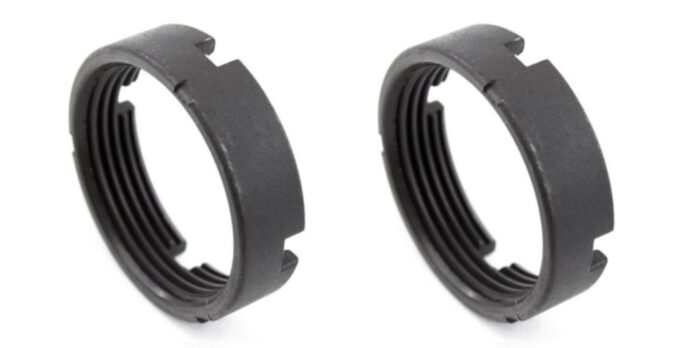Let’s look at a simple fact. Your everyman’s AR-style rifle, chambered in .223 or 5.56, does not produce a lot of recoil. The truth is that these are some of the lightest kicking rifles out there.
To be fair, though, there are ARs chambered in heavier, harder-hitting rounds like .308 and .50 Beowulf, so there’s a chance some of you reading this might actually have some concerns about recoil mitigation.
If that’s the case, here are 4 things you can do to help mitigate recoil, ranging from altering buffer tube accessories to changing how you shoot.
Add a Muzzle Brake
If you have a threaded barrel, adding a muzzle brake (also sometimes referred to as a compensator) is one of the easiest things you can do to turn recoil around.
Muzzle brakes alter how the gasses are distributed at the muzzle, redirecting the forces of felt recoil. Some muzzle brakes can cut felt recoil by as much as 50% without adversely affecting shot power.
It’s worth a note that suppressing a firearm will also feel like cutting recoil, but there are two items to be aware of here. One, a suppressor is an NFA item, and so hides behind much more red tape, and two, suppressors are very hard on the action. If you run a suppressed AR, be ready to clean it more frequently.
Get a Skeletonized Bolt Carrier
Before you fly off the handle, just hear us out. Yes, skeletonizing a bolt carrier group will remove mass, which, as you might know, should increase felt recoil.
But not in this case. The static mass of the rifle helps reduce felt recoil by absorbing it. The reciprocating mass (the part that moves) can increase it.
That means if you lighten the mass of the bolt carrier, you can lessen the mass moving back into your shoulder.
Look into what’s out there. There are skeletonized BCGs as well as titanium and aluminum models that are very lightweight and can help reduce the overall reciprocating mass of the rifle.
Look into Buffer Tube Accessories (Add Weight)
Another great way to help lessen felt recoil is to add more weight to your buffer tube system. There are several standard configurations (many AR-style rifles use a 3oz or so buffer weight) and increasing this will reduce felt recoil.
This is because the buffer weight is the first impediment the BCG encounters on its path to the end of the buffer tube, and then the stock, and then your shoulder.
Increasing the mass adds resistance for the BCG to work against, thus reducing recoil. A great one-two combo would be to install a lightweight BCG and a heavier buffer weight.
Change Your Stance
The last suggestion we have has nothing to do with altering the rifle itself and is the easiest, most hands-off way to make adjustments.
Simply adjusting your shooting stance, though it will not actually lessen the objective force of recoil, will change the subjective element: felt recoil.
Consider adopting an athletic stance. Begin with your feet shoulder width apart; staggering them with one foot slightly in front is acceptable, never stand with your feet together.
Lower your shoulders and lean forward into the rifle slightly. This lowers your center of gravity and will help you absorb recoil.
It’s about as simple as that, especially if you don’t want to tinker with the rifle platform itself.
AR-15 Parts and Accessories at Competitive Prices
For those of you that are comfortable with making adjustments to parts or to buffer tube accessories, visit MCS Gearup.
They carry a wide range of AR-15 parts, including buffer tube system parts, bolt carrier groups, and muzzle devices, along with many others.
They also offer live support at 239-848-6757 and many orders qualify for free shipping. Get the full details at their website; recoil reduction is within reach.


